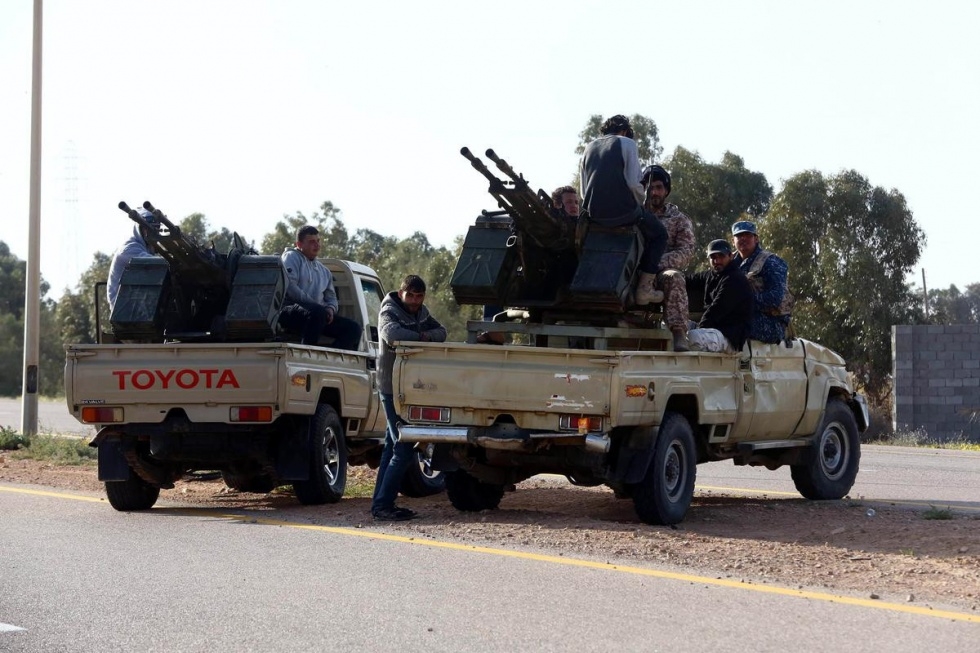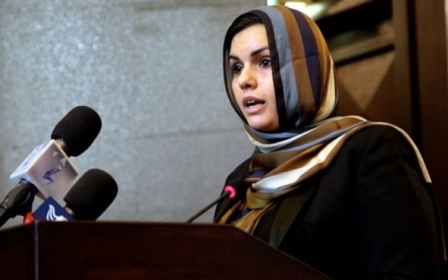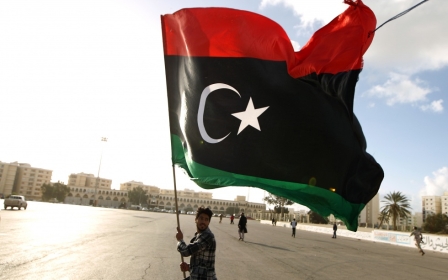Libya’s Misrata faces another enemy, and another battlefront

MISRATA / SIRTE, Libya – More than four years since Misrata joined the revolution to overthrow strongman Muammar Gaddafi, a sombre crowd turned out at dusk in downtown Misrata on Wednesday to bury their dead.
This time, their enemy calls itself the Islamic State (IS), and their latest victims were 10 young Misratan fighters, killed overnight at a checkpoint near Nufaliya, between Sirte and Sidra, in central Libya’s oil-rich basin.
“This cannot go unpunished,” a speaker told the emotional gathering in front of the mosque, where the coffins were laid out. “We support our revolutionaries and we refuse terrorism.”
“Misrata is the spinal cord for all of Libya, protecting it from breaking apart,” said Ramadan al-Jaber, a schoolteacher watching from the sidelines. “We want to build our country, but events like this are stopping us from reaching our dream.”
Misratan Brigade 166 moved to Sirte one month ago to disarm the IS threat, ridding the town of checkpoints and securing government buildings, and trying to settle the militant group’s departure through powerful local tribes.
Misratan fighters, allied with the Tripoli-based government’s Libya Dawn military alliance, are stretched thin battling General Khalifa Haftar’s forces across Libya. They had hoped to avoid opening another front against IS but it seems that recent events have forced their hand.
“They need to leave,” Brigade 166 leader Mohamed Omar al-Hassan had said last week. “If dialogue doesn’t succeed, we will have to do another way.”
Since last Saturday, when IS fighters attacked Misratan forces, the death toll has mounted and talks have failed. Misratan officials now agree there is no choice left but to oust IS by force.
The fight begins
On the outskirts of Sirte, 120 miles (200km) east of Misrata, military trucks, weapons and fighters are gearing up for their pending assault on IS inside the town.
On Thursday, Brigade 166 reportedly wrested control of Nufaliya from IS fighters in a firefight. This town, near Sirte, lies along the strategic coastal road linking Misrata to Libya’s central oil fields.
While reports emerged that the Libya Dawn-allied troops had been sent east to attack IS a month ago, the front has been relatively quiet until the past week when fighting between IS and Brigade 166 broke at a flash IS checkpoint east of Sirte on Saturday.
As the clashes continued, a steady stream of families began to pour out of the town, fleeing what they fear could become another devastating battle in Sirte.
After nearly a week of violence, 16 Libya Dawn fighters are dead, with many more wounded. At least 35 IS fighters have been killed. Since IS took control of the Ibn Sina hospital inside Sirte last week, it has been difficult to estimate their casualty rate.
Speculation on the identities of the IS fighters inside Sirte is varied. Misratan officials state some are foreign, based on their identification of the dead bodies. Others say they are angry Sirte residents from tribes that benefited under Gaddafi, or that Ansar al-Sharia, in an uneasy alliance with Libya Dawn in Benghazi, could have provided the fighters. It is most likely a mix of all three.
Multi-front war
The Libya Dawn alliance is already battling Haftar’s forces, now officially fighting for the Tobruk-based government, on frontlines in central, western and southern Libya, as well as in Libya’s second city Benghazi.
“We don’t want to destroy the city [of Sirte]. We are around the city, and we know who is moving into the city,” said Ismael Shukri, a spokesman for military forces allied to Libya Dawn. He emphasised how much Sirte’s residents did not want a war.
Haftar, Tobruk Prime Minister Abdullah al-Thinni and the House of Representatives (HOR) all exiled to the east, are backed by Egypt, the UAE, the EU and US, and misguidedly brand all opposition as “Islamists”. Tobruk has called for the international arms embargo to be lifted so that their forces can better fight terrorism.
Meanwhile, Tripoli-based Prime Minister Omar al-Hassi and the General National Congress (GNC), most actively backed by Turkey and Qatar, have incorrectly smeared their opponents as terrorists or ex-Gaddafi supporters.
The Tripoli-based Libyan Supreme Court ruled in November 2014 that the HoR was illegal, but the international community has largely ignored the decision. All international efforts are being thrown into a UN dialogue to stem Libya’s fighting and looming financial crisis, but it has so far yielded few results.
“In the current situation the jihadist presence in Sirte inevitably gets mixed up in the national political power struggle,” said Wolfram Lacher, a researcher on northern Africa at German Institute for International and Security Affairs, about Libya’s duelling government and allied militias.
Misrata’s willingness to fight against IS in Sirte, and their public recognition of the group as a destructive force and security threat, have been a turning point in the Libya crisis, he added.
But the car bombing of the Misratan headquarters of Brigade 166 early Monday morning, which killed one and was claimed by IS, is an ominous sign of where the battle could go.
“We are worried Misrata will have more violence,” said Abobaker Alhraish, a local government official who is headed to the UN peace talks in Brussels next week. “IS is trying to send us a message that they can move the war to us.”
IS has only taken centre stage in Libya in recent months. With the country’s multitude of armed groups fighting proxy battles over power and assets, it remains unclear whether the militants pledging allegiance to IS in Libya take orders directly from IS leader Abu Bakr al-Baghdadi in Iraq and Syria, or are acting more locally.
The tit-for-tat killings kicked off in January when an assault on the Corinthian hotel in downtown Tripoli killed nine, including five foreigners. Tensions intensified in February when a videotaped beheading of 21 Egyptian Coptic Christians on a Libyan beach appeared. Groups pledging their allegiance to IS have claimed responsibility for both.
The retaliatory Egyptian-Libyan airstrikes on Derna, in Libya’s northeast, killed at least seven civilians, and was followed by an IS suicide bombing in nearby al-Gubba, seen as loyal to Tobruk, where 44 people were killed.
Sirte
Sirte benefited greatly from Gaddafi’s largesse, and was hit hard by NATO bombing and fighting during the revolution’s final stages in 2011. Ostracised for their relationship with the former government, Sirte has stood largely neglected since – something which has allowed militant groups like Ansar al-Sharia, part of the Libya Dawn alliance, to take hold.
IS emerged just as Ansar Al-Sharia suffered a leadership crisis, with the January death of Benghazi branch founder, Mohamed al-Zahawi, who was accused of killing US ambassador Christopher Stevens.
Many fighters have since traded allegiances to the new IS brand, and are now lodged in Sirte’s vast Ougadougou conference complex, with the black IS flag visibly high above its entrance.
They also control the Ibn Sina hospital, where foreign staff from the Philippines and Ukraine have been prevented from leaving, as well as the luxury Mahari hotel, infamous for the beachfront massacre of 54 suspected Gaddafi supporters held captive by revolutionaries in 2011.
As the battle escalates, and the body count mounts, Misrata has now found itself fighting Haftar and IS.
Fathi Aluigi, 21, at the funeral for the slain Misratans echoed a common sentiment. “We don’t like what happened, and where this is going. Now we will have to take revenge.”
New MEE newsletter: Jerusalem Dispatch
Sign up to get the latest insights and analysis on Israel-Palestine, alongside Turkey Unpacked and other MEE newsletters
Middle East Eye delivers independent and unrivalled coverage and analysis of the Middle East, North Africa and beyond. To learn more about republishing this content and the associated fees, please fill out this form. More about MEE can be found here.




